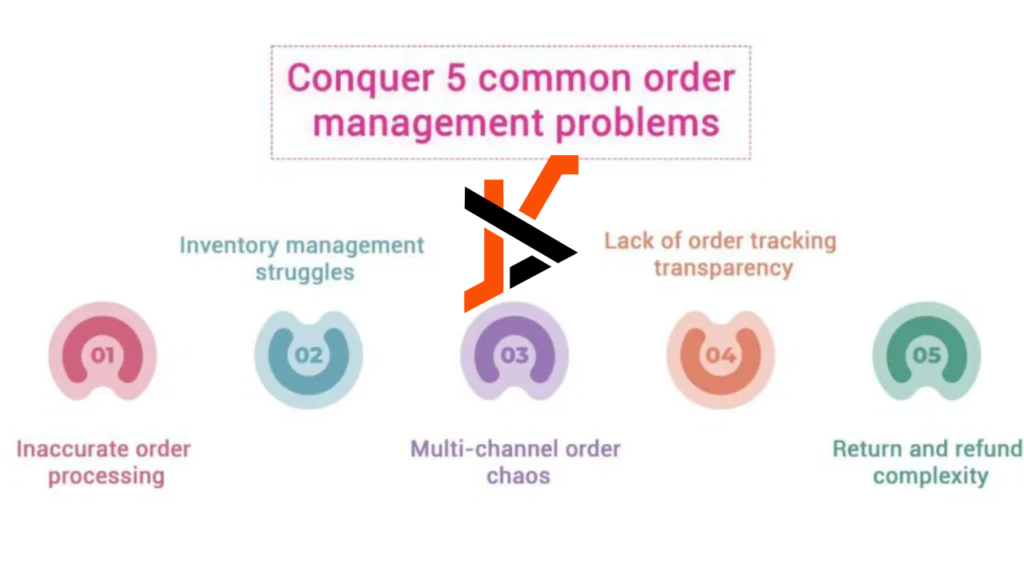Order management is one of the most crucial business operations, playing a significant role in driving growth, customer satisfaction, and reputation. However, it can be a complex and delicate process as it involves many challenges that can hinder efficiency and effectiveness.
Comprehensive knowledge about common order management challenges and strategic solutions is crucial to survive and thrive in the massively competitive business landscape. In this guide, we will discuss what problems you can face when managing orders and what can help you tackle them like a pro.
7 Common Order Management Challenges
Handling Orders from Multiple Sales Channels
With the rise of e-commerce and omnichannel retailing, businesses need to process orders from multiple platforms such as websites, marketplaces, and physical stores. It is a complex process that can lead to errors, delays, and inventory mismanagement if not handled properly.
Solution: Investing in a well-designed OMS system can solve this problem. It will integrate all sales channels into a single platform, providing real-time visibility and synchronisation of orders. By centralising data, you can streamline order processing and reduce the risk of inconsistencies across channels.
Keeping Inventory Accurate
Inventory management is the second most common trouble warehouse managers often face. Inventory inaccuracy can lead to overstocking, stockouts, or even losing a sale because you didn’t know you had the item in stock. Without proper tracking, it’s challenging to know the true state of your inventory.
Solution: Solving this issue requires advanced tools that can provide real-time inventory visibility. These tools should track stock movements, automatically update levels, and alert you when replenishment is needed. Accurate inventory management helps you avoid unnecessary costs and keeps customers happy.
Dealing with Fulfilment Delays
Fulfilment bottlenecks are also a major challenge that often stem from disorganised workflows or a lack of resources during peak times. Delays in order picking, packing, or shipping can create frustration for both businesses and customers.
Solution: Streamlining the fulfilment process with optimised workflows is the key to overcoming this trouble. It includes prioritising orders based on urgency, ensuring clear communication between departments, and using technology to track each step. Regularly reviewing and refining the process will also help you stay ahead of delays.
Managing Returns and Refunds
Returns and refunds are a necessary part of doing business but can be a logistical headache. Mismanagement of returned items or slow refund processing can leave customers dissatisfied.
Solution: Creating a dedicated system for returns can help you ensure they are processed efficiently. Clear return policies, fast refunds, and streamlined handling of returned inventory help maintain customer trust. Automating parts of this process can also save time and resources while providing a smoother customer experience.
Integration Challenges
Many businesses rely on disconnected tools for managing orders, shipping, and customer data. It creates silos, leading to inefficiencies and errors when systems don’t “talk” to each other.
Solution: The solution lies in integration. By connecting different systems like order management, shipping software, and customer databases, you can create a unified workflow. Integrated systems enable smoother data exchange, reduce manual work, and improve overall operational efficiency.
Meeting Rising Customer Expectations
In today’s dynamic business landscape meeting customers’ expectations such as faster shipping, real-time updates, and exceptional service is a major challenge. Failing to deliver on customer expectations can damage your reputation and result in losing sales.
Solution: Focusing on transparent communication and accurate demand forecasting. You can also integrate automatic tools to provide accurate delivery timelines, live tracking, and keep customers updated about their orders.
Scaling Operations for Growth
As businesses grow, handling increased order volumes becomes a significant challenge. Without scalable systems, bottlenecks occur, leading to delayed processing, errors, and customer dissatisfaction.
Solution: Automating repetitive tasks and optimising workflows are essential for scaling. You can invest in tools and systems that can handle larger volumes while remaining flexible to adapt to future growth. Proper planning and regularly evaluating processes ensure smooth expansion without disruptions.
Bottom Line
Efficient order management can set you apart from competitors and enable you to attract more audience and retain potential clients. It is a daunting task but staying informed and prepared to tackle what’s coming your way can help you address these challenges effortlessly. Investing in a reliable OMS can make this process more streamlined and stress-free, driving both operational efficiency and consistent growth.

